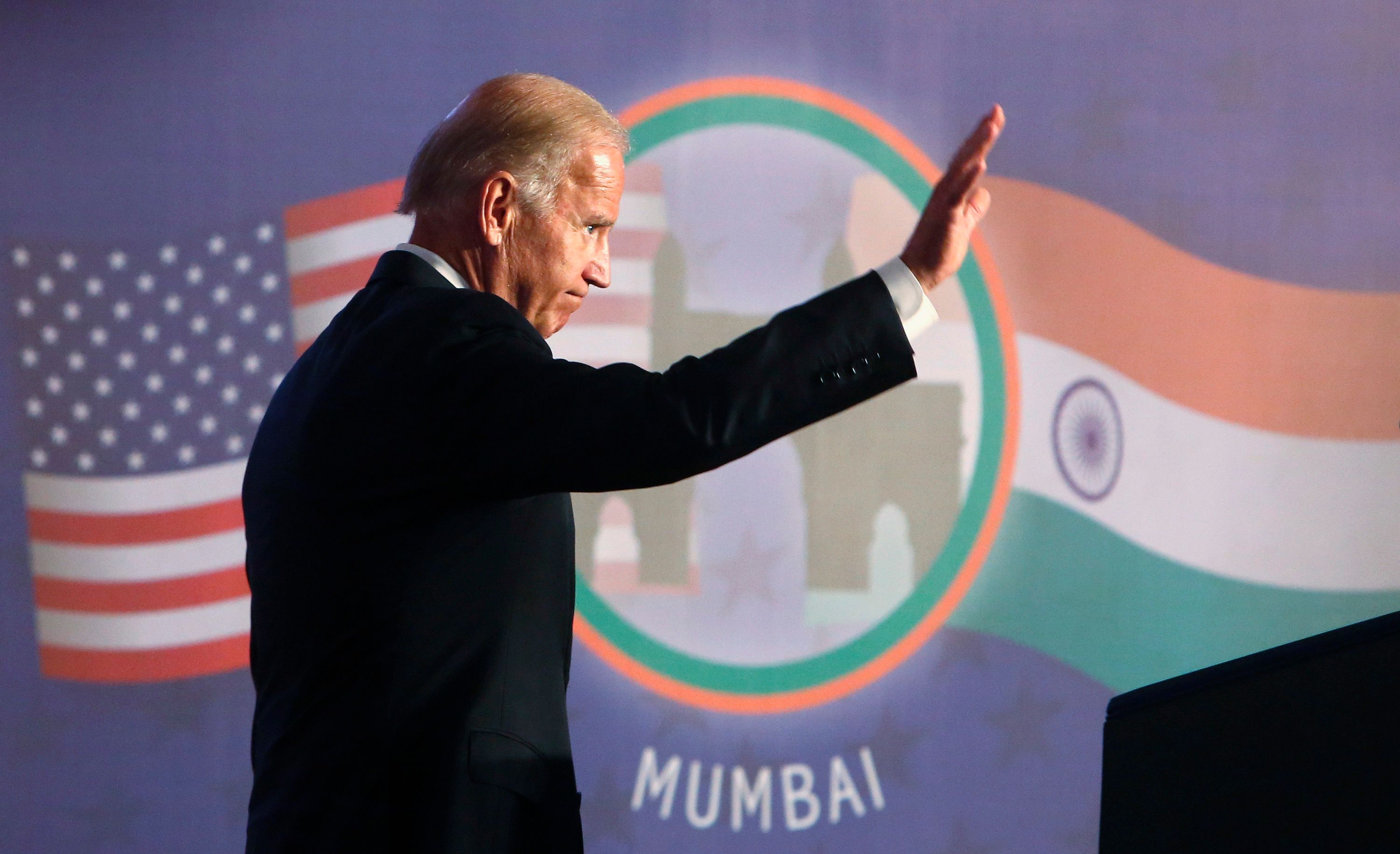Perspectives on the Future of U.S.-India Relations during Biden’s Presidency

India was one of a few countries to assess cooperation with the Trump administration as positive and actually further strengthened its strategic partnership (launched in 2004) with the U.S. over the last four years. The good personal relations between Indian Prime Minister Narendra Modi and President Donald Trump, including joint participation in mass rallies in the U.S. and India in 2019 and 2020, raised concerns that relations would become more difficult if the American administration changed. Modi, however, was one of the first leaders to congratulate Biden on his victory (on 7 November). Modi and Biden held a telephone conversation on 17 November, assuring each other of their will to deepen the strategic partnership.
The incoming U.S. president and vice-president have a friendly attitude towards India and show exceptional knowledge of this country. Biden, as vice president in the Obama administration, supported the policy of engagement with India. As chairman of the Senate Foreign Affairs Committee, he supported the lifting of U.S. sanctions on India in 2001— imposed after the 1998 nuclear tests—and in 2008 played an important role in the ratification of a historic bilateral civil nuclear cooperation agreement. Biden paid an official visit to India as vice president in 2013 and also met with Modi during his visits to the U.S. in 2014 and 2016. Vice President-elect Kamala Harris is one of the nearly 4 million-strong Indian diaspora in the U.S., also has personal ties to India. Her mother immigrated to California in 1958 to study from the South Indian state of Tamil Nadu, where the family still has relations. Antony Blinken, the incoming secretary of state, while still a security adviser to then Vice President Biden, supported closer cooperation with India as part of the “pivot to Asia” policy, and recently described India as a “key partner” of the U.S. in Indo-Pacific.
Opportunities for a Stronger Relationship
India counts on strengthening the comprehensive cooperation with the U.S. In recent years, the two countries have tightened coordination on strategic and defence issues at the bilateral level, including through meetings of ministers and secretaries of foreign affairs and defence (“2+2”) and multilateral (within the QUAD format, also including Australia and Japan). They signed several important agreements increasing the interoperability of their armed forces and intelligence cooperation. India can expect further intensification of joint exercises and acquisition of American weapons. The main challenge in this area will be India’s purchase of a Russian S-400 defence system in 2018, which, like Turkey, may lead to sanctions by the U.S.
The U.S. and India have similar assessments of threats to international security, including the fight against terrorism and critical approach to China’s actions. India is concerned about an easing of U.S. policy towards China just as it tightens its stance in the aftermath of border clashes in the Himalaya in June 2020. However, India will remain a key U.S. partner in the region, regardless of any modifications to Trump’s “free and open Indo-Pacific” strategy. Any shift in the U.S. approach to China is likely to be more in form than content, and India’s role as the main counterweight to China in the region will increase. Moreover, the Biden administration’s search for cooperation with China in tackling global challenges will also be beneficial for India, easing regional tensions and strengthening multilateralism.
Economic cooperation, which was the main point of tensions during Trump’s tenure due to the U.S. trade deficit with India, may improve. Bilateral trade in goods increased from $109 billion in 2015 to $153 billion in 2019, along with a corresponding decrease in the U.S. trade deficit from $31 billion to $29 billion, and American investments in India rose from $36 billion to $49 billion. The Trump administration though imposed tariffs and excluded India from Globalised Scheme of Preferences regime. India will seek to reverse the tariffs on Indian steel and aluminium and restore the trade preferences under the GSP. Agreement on these issues will help to accelerate the negotiations started by the Trump administration on a free trade agreement. India is also counting on cooperation in rebuilding its economy after the COVID-19 pandemic, and in particular on increasing American investments as part of relocating production from China. The reduction of the U.S. trade deficit will be supported by increased purchases of American oil and LNG by India and the participation of American companies in the construction of nuclear power plants. Biden is likely to withdraw the tightening of the visa regime announced in June 2020, including specialised H1B visas for skilled workers, 75% of which went to Indians.
Finally, the expected U.S. return to international organisations and multilateral negotiations will create opportunities for joint global initiatives. This may facilitate reform of the WHO and WTO, and intensification of the fight against climate change. An opportunity for closer cooperation is provided by India’s non-permanent membership of the UN Security Council in 2021-2022. In addition, any improvement in U.S. relations with Iran, including the withdrawal of American economic sanctions, would facilitate India’s strategic investment in the expansion of the Iranian port of Chabahar.
Potential Challenges
India’s greatest concern is that the new administration may increase criticism of its internal situation related to the clear weakening of democratic standards. While Trump paid no attention to it, the Biden administration’s return to values-driven policy could be a source of tension. Blinken expressed concern about the deteriorating state of democracy in India, for example, in the context of worse treatment of minorities or amendments to its citizenship law. The U.S. will also likely comment on the situation in Kashmir more frequently, something to which the Indian side has so far reacted negatively. However, while these topics will feature more frequently in bilateral talks, this will not jeopardise pragmatic cooperation based on their shared strategic and economic interests.
U.S. relations with Pakistan and Afghanistan, which are vital for India, will be a more serious challenge. Biden is likely to change the 2017 strategy towards Afghanistan and South Asia, which saw Pakistan as the main source of destabilisation in the region and encouraged India to play a greater role in Afghanistan’s reconstruction. The U.S. may seek to improve relations with Pakistan in order to persuade the Taliban to a ceasefire and engage in intra-Afghan peace talks. The new administration may extend the withdrawal of U.S. troops from Afghanistan (scheduled for 1 May 2021) to maintain pressure on the Taliban, but will not reverse the process. Greater U.S.-Pakistani cooperation and the growing Taliban influence in Afghanistan will increasingly be a more significant problem for India, which has sought international isolation of Pakistan.
Conclusions and Perspectives
The U.S.-India partnership is built on strong foundations (strategic, economic, people-to-people, shared values) and supported by major political forces in both the U.S. and India. Hence, the change of American administration will not stop the process of engagement between the two countries. The U.S. will continue to support India as a stabilising force in the Indo-Pacific region and a partner in containing China’s rising influence. In the coming years, one should expect deepening military, energy, and economic cooperation, including negotiations on a free trade agreement.
The expected change in style in U.S. policy by the abandonment of unilateralism and transactionalism will increase mutual trust and enable closer cooperation on global issues, such as terrorism, trade, or reforms of international organisations. It may, however, mean additional pressure on India to improve market openness, present more ambitious climate goals, or improve democratic standards. Closer U.S.-Indian relations will foster deepening of EU cooperation with India and will enable coordination of the positions of the three largest democracies in multilateral forums such as the G20 or UN. A stronger partnership with the U.S., which is crowding out Russia’s historic influence in India, is good for Poland as it is preparing a series of top-level meetings with India in the coming months.


